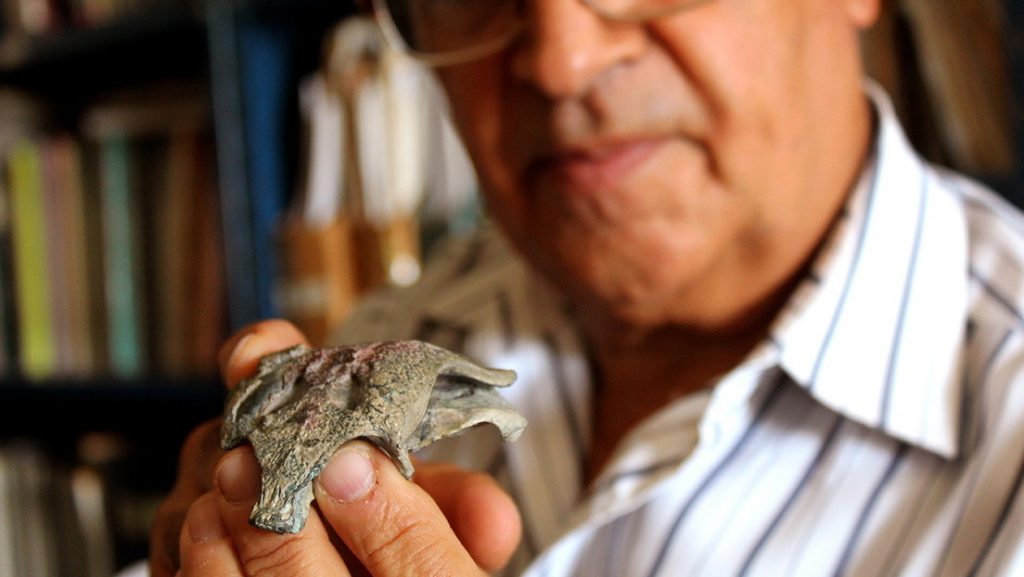Posted:
26 July 2021 03:27 GMT
According to the researchers, the small reptile, whose length does not exceed 70 cm, now occupies a key place in the history of these animals, as evidenced by the structure of its skull and hind legs.
The skeleton remains of a 148 million-year-old crocodile have been discovered in the Patagonian mountain range of southern Chile, in a major joint expedition of Chilean and Argentine scientists. reach Argentine Museum of Natural Sciences Bernardino Rivadavia (MACN).
Finding this little “grandfather” of crocodiles as the researchers called it, It fell at an altitude of 1500 metres, in a place where there is a fossil site from the Jurassic period. The site was discovered in 2004, when the fossil remains of the herbivorous dinosaur Chilesaurus diegosuarezi were excavated. Almost 10 years later, in 2013, an expedition was carried out in which the remains of a small crocodile appeared from the mainland.
Scientists have named the new species Burkesuchus mallingrandensis, which means “Burke’s crocodile of Mallin Grande.” As explained by Fernando Novas, head of the MACN Laboratory of Comparative Anatomy and Vertebrate Evolution, the name given is a tribute to American Coleman Burke, a Patagonian lover and enthusiast of paleontology.
It is a hitherto unknown reptile, the ancestor of modern crocodiles, approximately 150 million years ago Lived in Patagonia with Dinosaurs. According to a study conducted by paleontologists in South America and published in the journal Scientific Reports, the now-existing species occupies a key place in the history of these animals, as evidenced by the structure of their skull and hind legs.
“This was a small crocodile of no more than 70cm in length, in stark contrast to the six-meter-long sea crocodiles that flourished at the time in what is now Niquin Province, formerly covered by the seawater of the Andes mountain range,” Novas detailing, according to CTyS-UNLaM . Agency.
For his part, paleontologist Federico Anolin, co-author of the study, added that “At that time, predatory crocodiles were present in the seas, but on the other hand, predatory crocodiles were present in the seas. Burkesuchus was humble and young, though it is a complete radiance of terrestrial crocodiles, of which very little is known throughout the world.”
Agnolin admitted that scientists did not find the animal’s snout, but its small size, as well as its small, sharp teeth, indicate that Burkesuchus was a small carnivore that probably fed on invertebrates such as insects, crustaceans, or smaller vertebrates such as fish.
“What we know about Porkisuchus indicates that it did not have the ability to hunt large prey, or to tear large pieces of meat as if live crocodiles do,” the expert said.

“Social media evangelist. Student. Reader. Troublemaker. Typical introvert.”





:quality(85)/cloudfront-us-east-1.images.arcpublishing.com/infobae/WIXPVSBHQJC4LFKBLNWCWH5Y5Y.jpg)

More Stories
The City of Arts and Sciences of Valencia presents the first public exhibition of Pablo Achugarry in Spain
The Aragon Institute of Health Sciences will have a health data office
What exercises help reduce the risk of heart disease?